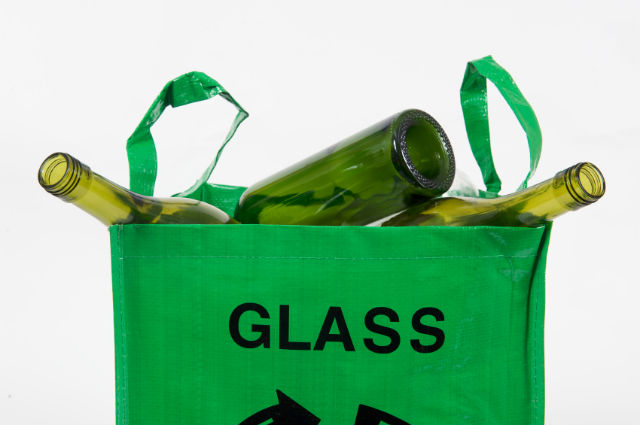
- Mother Nature is responsible for producing naturally occurring high-silica-content glass (otherwise known as obsidian or extrusive igneous rock), which is the product of rapidly cooling felsic volcanic lava or meteor/lightning strikes.
- Broken and crushed glass collected via municipal recycling programs is called “cullet” and is eco-friendly since it consumes 25% less energy than glass produced with 100% raw materials, in turn generating fewer greenhouse gases.
- Man-made glass is a combination of extremely high-temperature molten silicon dioxide with calcium carbonate and sodium carbonate, often augmented with cullet.
- There are more than 49 glass-manufacturing facilities across America and 65 plants that are solely dedicated to processing cullet.
- Glass is one of the most sustainable consumer materials — considered to be a truly “cradle-to-cradle” packaging material since it never loses its integrity during the recycling process and is infinitely recyclable — and yet U.S. citizens dispose of “enough glass every two weeks to fill a skyscraper comparable in size to the 1,350-foot towers of the World Trade Center.”
- Glass never decomposes, making it the worst candidate for landfill entombment! Experts suggest that it would take 1 million years for a simple glass bottle to completely break down under normal landfill conditions.
- 10 gallons of oil is saved with every ton of recycled glass collected by municipal programs, reducing air pollution by as much as 20%.
- Recycled glass can transition from the recycling facility back into a new container in as little as one month.
- For each ton of glass that is collected via recycling programs, 1,300 pounds of sand, 410 pounds of soda ash, 380 pounds of limestone and 151 pound of feldspar are saved along with 2 cubic yards of landfill space and 42 kWh of electricity — the equivalent of a 4.46-ton reduction in carbon dioxide emissions.
- Of the 41 billion glass containers manufactured in the United States every year, 11,390,000 tons are discarded annually.
- The Waste Management Recycle America Alliance uses 50% of the glass collected via nationwide curbside programs as a landfill layering material called “roadbed” (to minimize wind-carried “blow-offs”) as well as road aggregate and sandblasting grit.
- Other unique applications for recycled cullet include erosion-combating alterni-beach sand, glass countertops, fiberglass insulation, kitchen tiles and glassphalt (which consists of thoroughly washed/crushed recycled glass blended with natural aggregate, bitumen and preserving agents).
- Glass that is processed in recycling facilities must be sorted by color before undergoing glass “decolorization,” with specific chemicals added to achieve each unique recycled glass tone (from green all the way to amber).
- The bottoms of all glass bottles are engraved with an embossed “peanut” code as well as an ink-jet code (only visible under black light) that reveals the location that it was manufactured.
- Glass-like products that cannot be recycled along with conventional silicon-based material in traditional processing facilities, include crystal, light bulbs, mirrors and Pyrex, since they all melt at varying temperatures and contain chemical contaminants. Windshield glass (while also recyclable) must be processed separately since it consists of two layers of glass sandwiched between a PVC membrane.
- When you recycle one single glass bottle, enough energy is saved to illuminate a 100-watt light bulb for four hours or power a computer or television for close to half an hour.
- Rather than recycling glass containers, which consumes a great deal of energy, the Grassroots Recycling Network suggests that the U.S. embrace a refillable container system modeled after what Latin American and European countries employ.